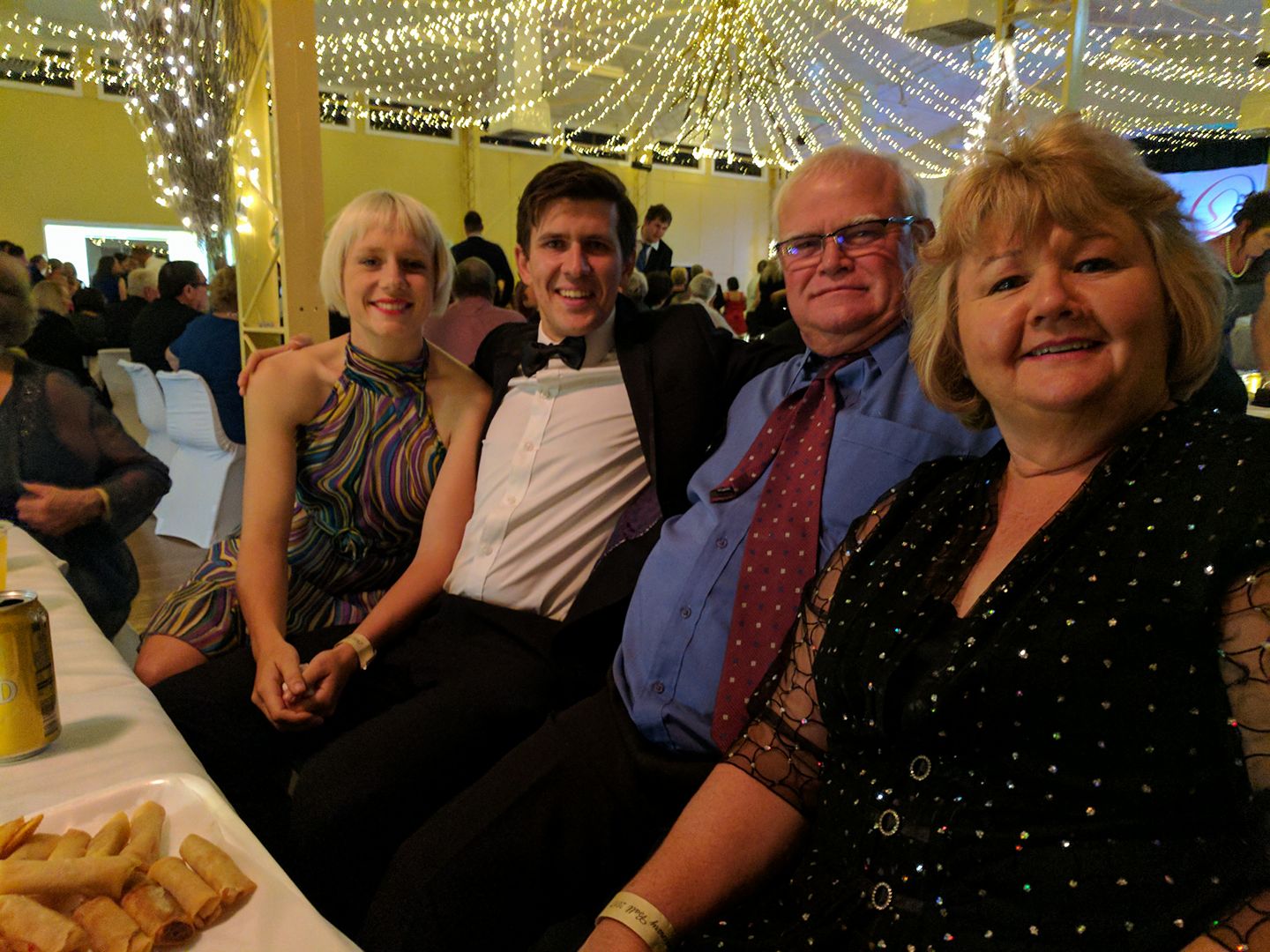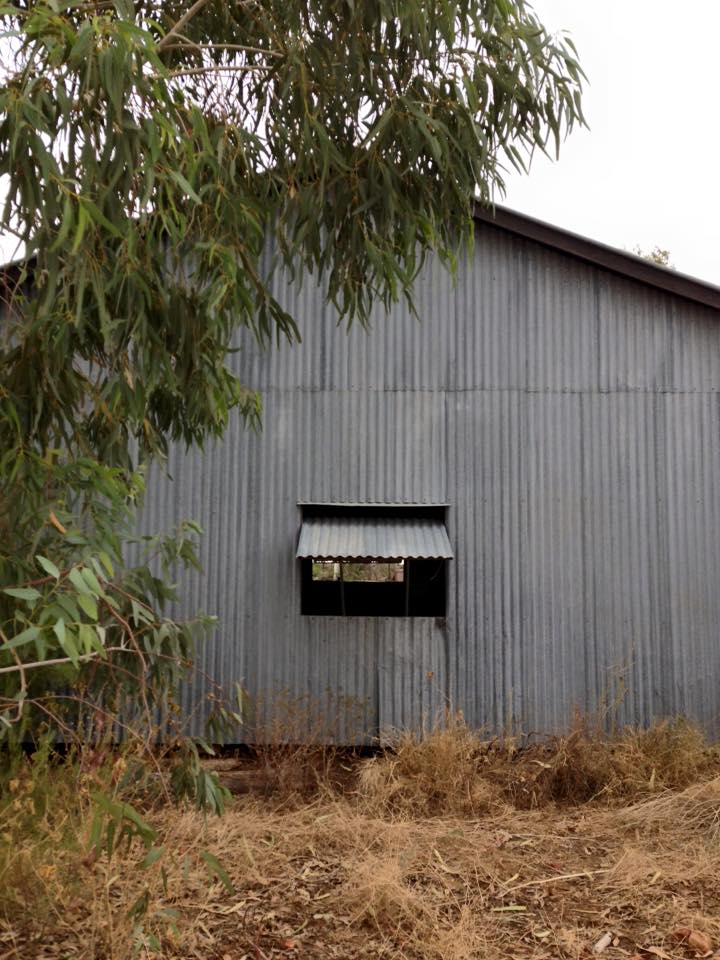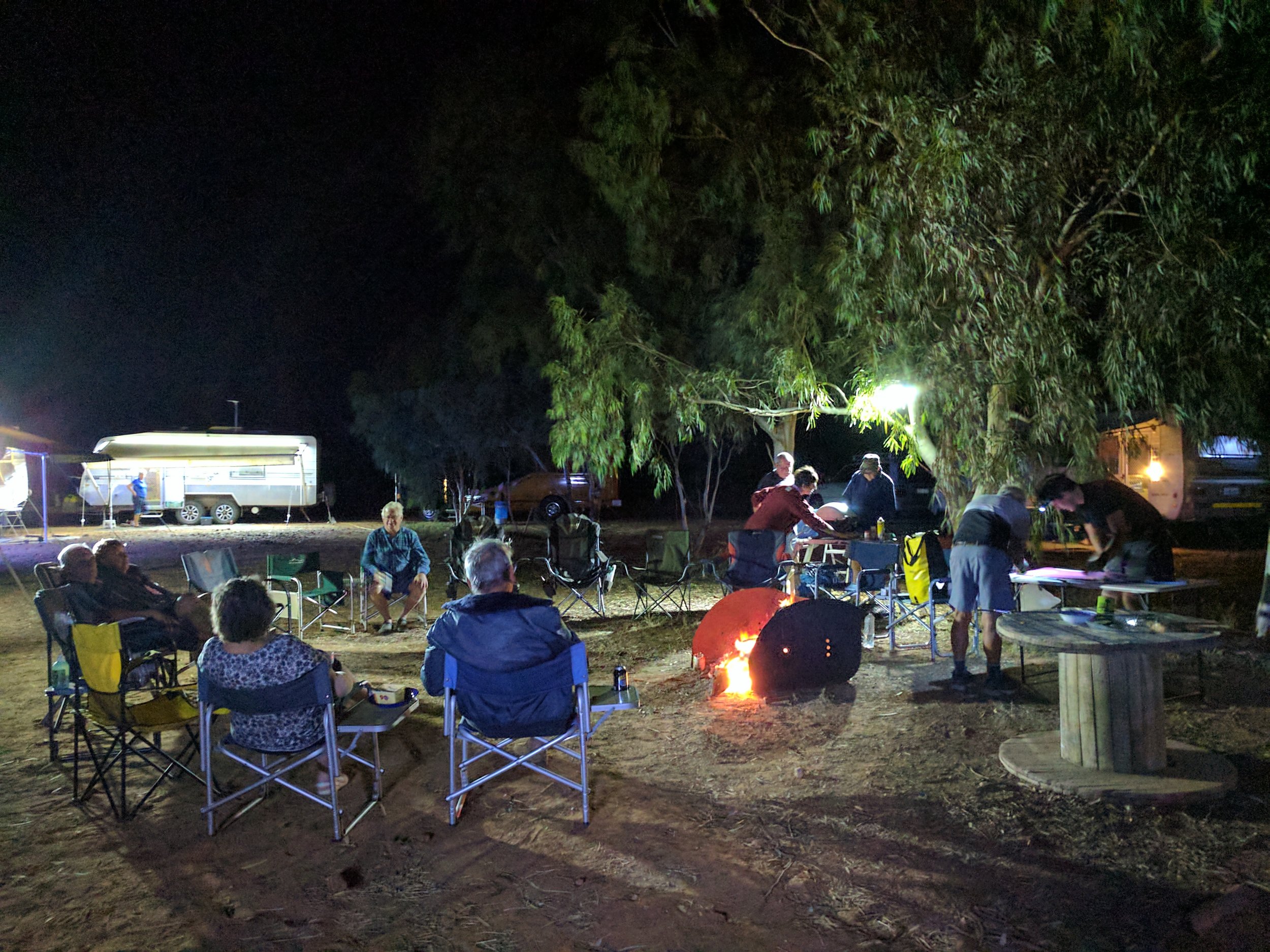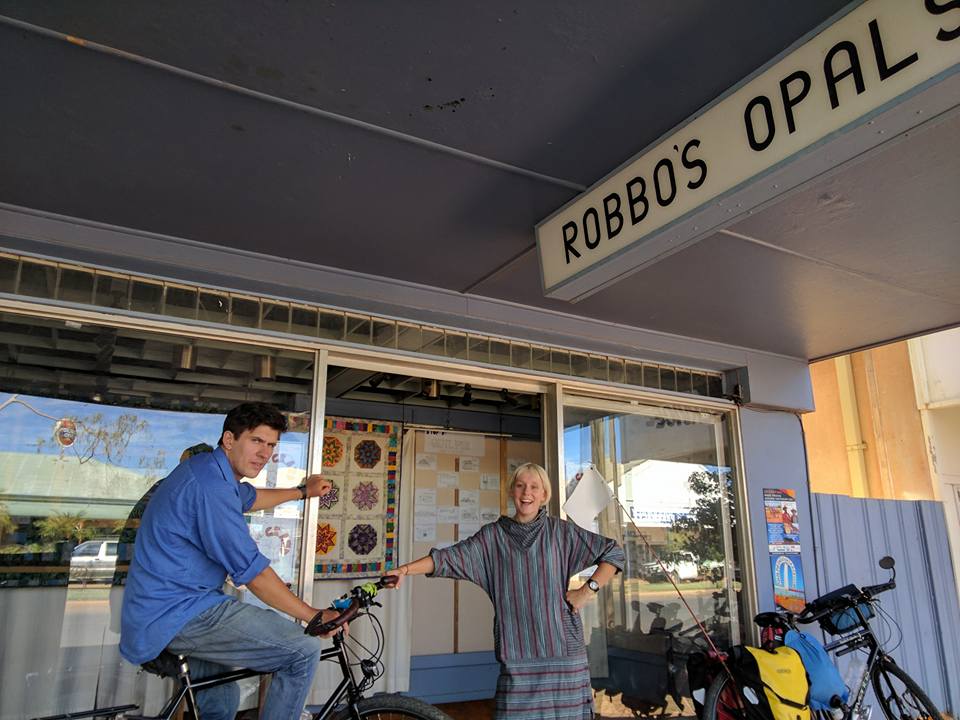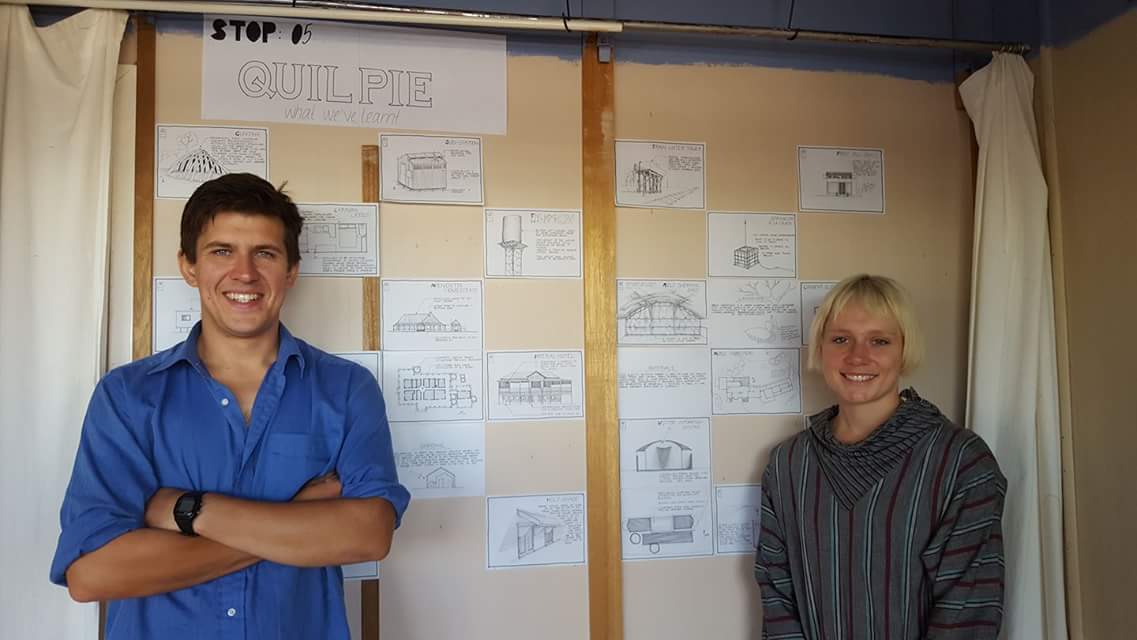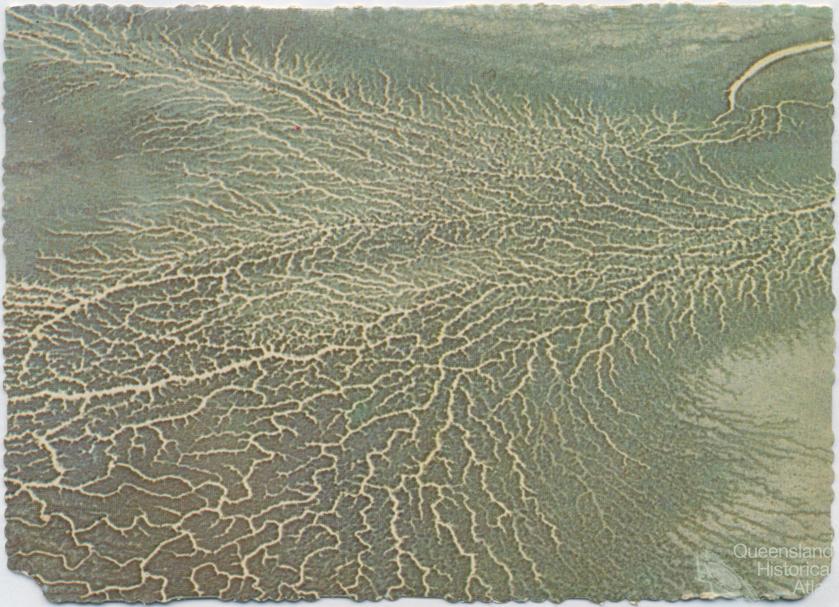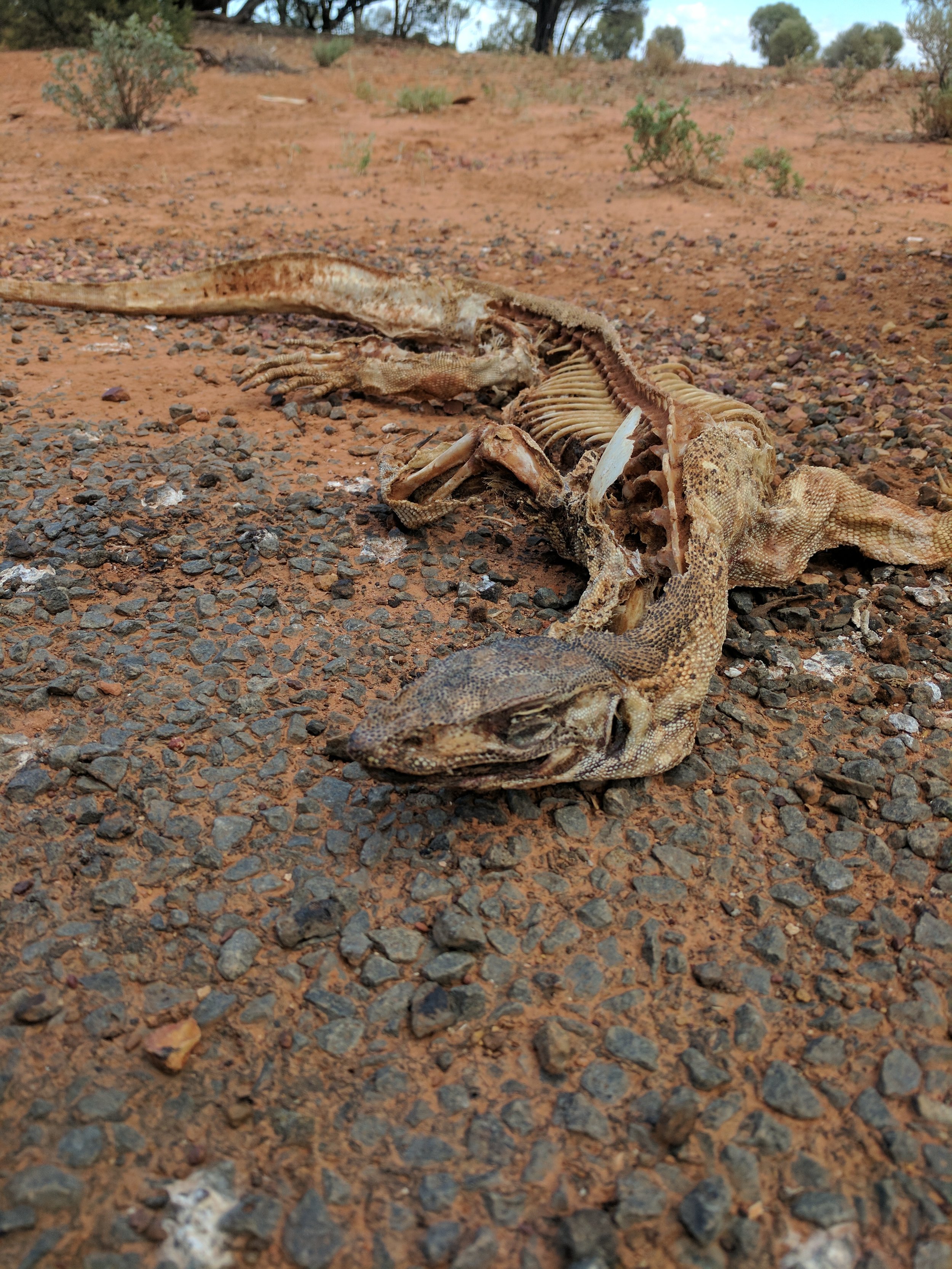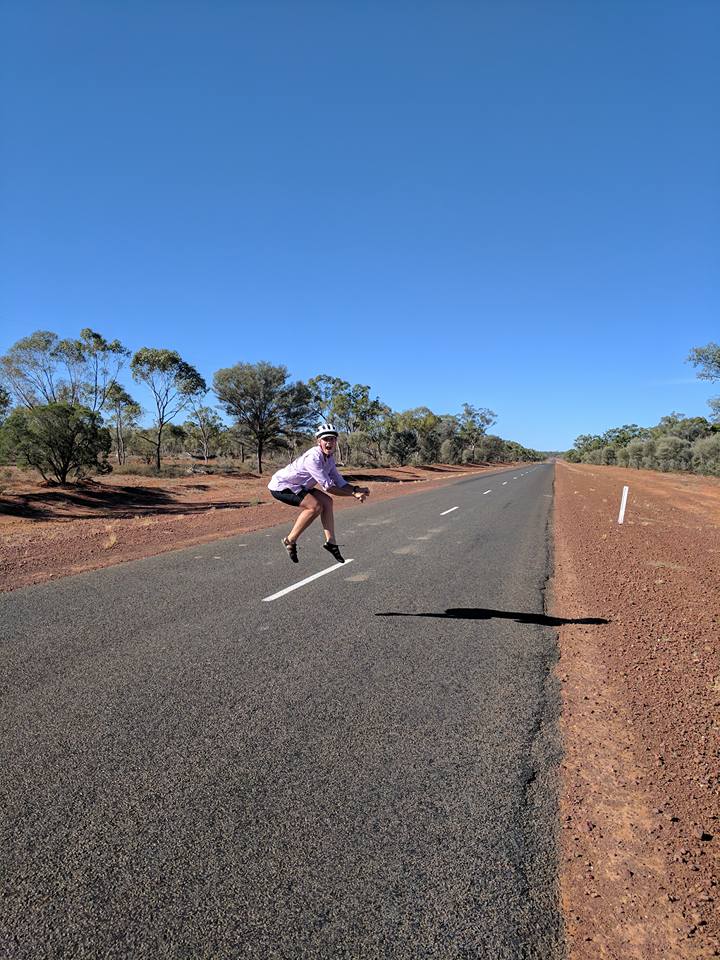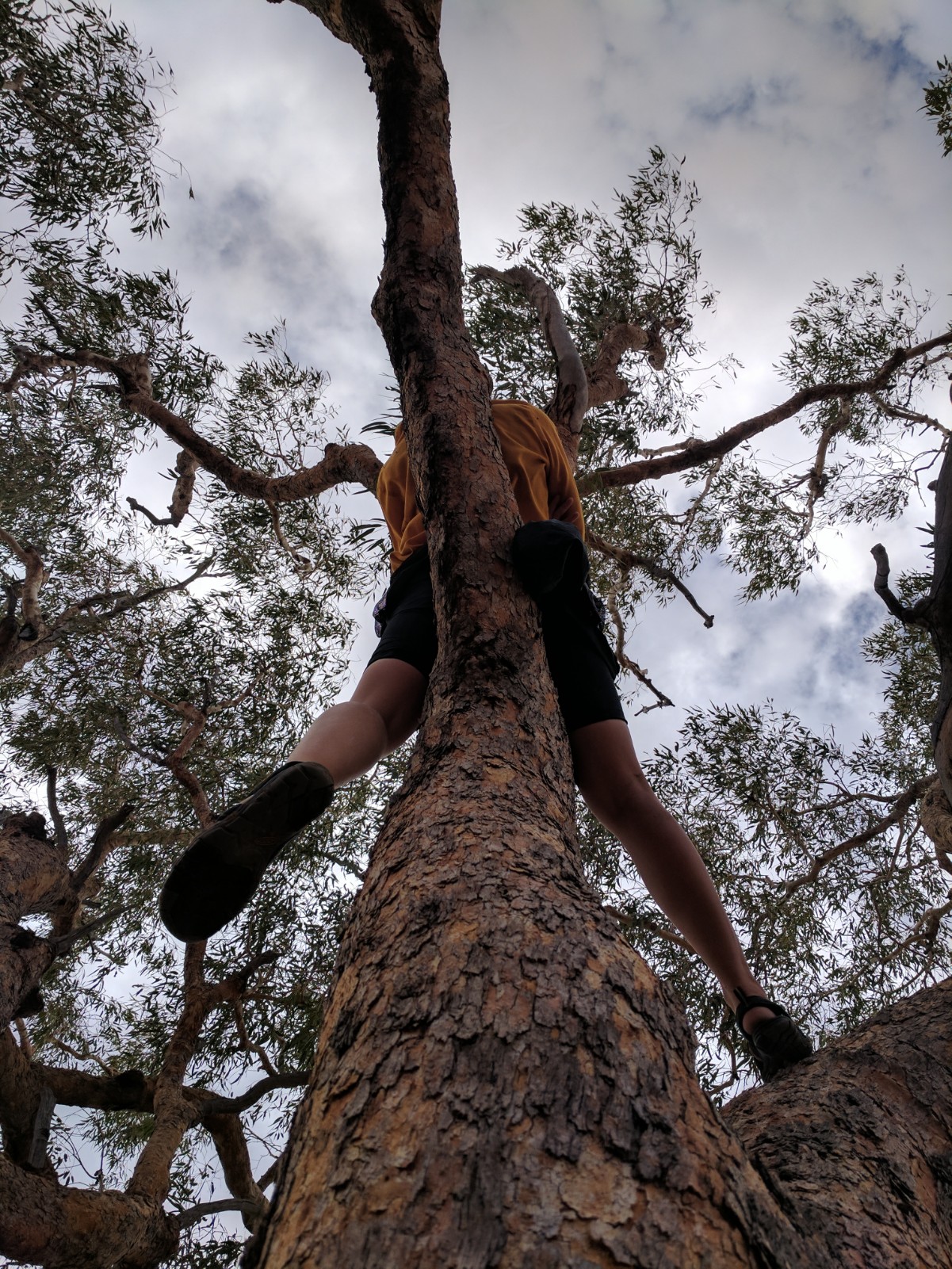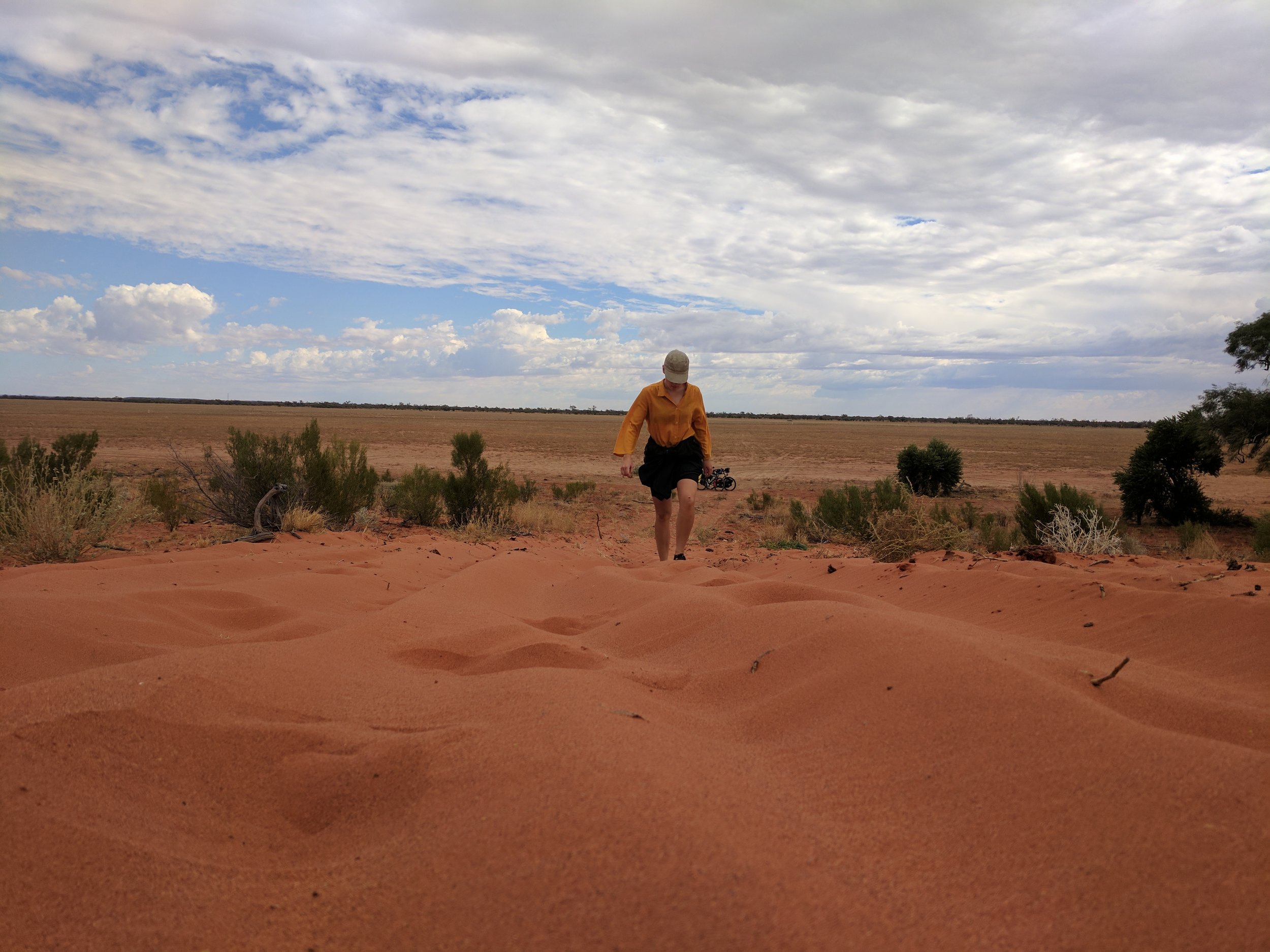Red dirt and dust, the piercing sun beams. Flies a menace. Water always a part of the conversation. Average annual rainfall is around 12 inches, average evaporation is 18 foot. Sitting upon the artesian basin though, “there are no water restrictions”. A baffling contradiction.
Place
Originally the junction of four indigenous language groups, the Wadjalang, Ngandangara, Puthamara and Maranganji according to anthropologist Norman Tindale, however this is corroborated by other scholars. This semi-arid zone begins to see indigenous tribes living and hunting in smaller groups and walking further for food and water.
Today bore water is the only source of water, two town bores supplying the life source. A ruthless Sulphur smell and hot, straight out of the ground. One must use cooling tanks, notable in the roof scape or raise sprinklers on milk crates high off the grass and hope the hot water doesn’t kill the trees and plants growing. The bores are drilled approximately 1000 metres deep, cooling tanks fill drink bottles and direct bore water “straight off the dinosaurs back” runs through shower heads for five minutes to clear the pipes of cool water before heating up. Told by an old cocky, the old bore came out of the ground 3°C below boiling, the new one at 75°C; cooling tanks a must.
Surrounded by large properties of unfathomable size, the main industries are grazing (it is strong sheep and cattle country) and council road maintenance. However the sheep are under threat from dingoes and lack of pasture, government and superannuation funded ‘exclusion fences’ are a saving answer. On the coast with our comfortable lifestyles, superannuation looks very different. We were told by a local many years ago statistics showed for each beast, 40 acres is needed. Today, apparently not much has changed.
Opals are present and the landscape is predominantly flat and rocky with breakaway topography from the Grey ranges to the west of Quilpie, or, as Owen insultingly queried one of our incredible hosts, “what are those pimples there for?”. Those “pimples” define two water catchment areas; on the eastern side of the watershed, is the Bulloo river catchment making its way into vast swamps aptly named Bulloo Downes, west runs to Lake eyre…eventually. Minimal old growth and large timbers are present due to the semi-arid climate and lacking nutrients of the clay soil. Genuses of acacia are more prevalent than any other tree, we’re told they’re some of the hardiest. Mulga and Gidgee are two species in particular where their shape funnels water toward the trunk and the elongated needle leaf are small to ensure minimal evaporation.
The Layers of Quilpie. "Mighty" should be in inverted commas.
Today Quilpie is optimistic about its future, maybe too optimistic. The recent land development by council was touted as a two for one deal. Quick BUY NOW!
People
Peter Stutchbury had said to us before we left, “they’re the most generous kind” in reference to farmers. In view of the people we’ve met and the reception we’ve received, we concur. The generosity continues to be overwhelming; from “Why don’t you come home with me!?” at a felting workshop, to, “we’ve got a donga in the truck yard, would you like to stay in that” and “Bobbie, what size dress are you” in searching for attire to wear to The Centenary Ball. Country hospitality is like no other. Being the week of Anzac day and the Centenary for the town we experienced this great sense of community and character.
We have admired, and it is particularly noticeable in the women, the multiplicity of roles these people play. From mothers, farmers (invisible farmers), carers, business owners or workers and active community members it wasn’t unusual for us to hear in eloquent English with pearls around ones neck and handbag in hand “I best go put these licks out”.
Lyn is a local artist who captures the landscape and its vivid colours magnificently. We were both astounded at the amount of oranges and reds she must go through in her work at Eagle Gallery. Having a hugely popular studio/gallery attached the family home she plays hugely active and integral roles in her community, during the centenary celebrations we witnessed it all. We had the privilege of gallery sitting for her over a few days during that frantic time and the amount of old locals calling in for nostalgia’s sake just to be reminded of the specifics of beauty in the Quilpie landscape was astounding. The ability for an image to capture and resemble so much, we are in awe and hopefully one day our drawings may harness some such greatness. Husband Jack is a man of all men. A retired mining registrar throughout the local opal fields he has an intimate acquaintance and knowledge of the land, just as an old cocky would. Chatting about Coober Pedy, we commented that it was like the wild west, Jack with a knowing smile said “it is the wild west”.
During our stay is was the centenary celebrations for the town, bustling with grey nomads, John & Gail Shadforth, are some themselves. We serendipitously met at the rum and milk sunrise Anzac day ceremony and since, have been one of our biggest supporters. He introduced us first hand to the way of the grey nomads, happy hour(s) and social vivacity of the lifestyle. He has done many things including being a part of RV Home Base. It is an over 55’s village to suit those living this nomadic way with all the large sized bits and bobs associated.
Stuff (architecture)
Indigenous architecture used the thick strong timbers from creek lines to make dome structures which were often clad with leaves and sometimes a mix of damp sand and grass which set rock hard when dry. The biggest issues here was heat and the masonry domes provided shade from the hot sun. In order to get warm at night a fire was lit, which would warm up the masonry shell and then raked out before bed. Typical to this region was thick entrance logs that formed an upside down “V”, this appears to be a stylistic trait, so don’t let anyone tell you that Gunyah’s ain’t got style.
The lack of large, straight timber is embodied in Moble woolshed, now in the hands of the 4th generation of the historic name: Rutledge. Structural timber forms a basic orthogonal skeleton on the interior of the shed. No trusses and the like, typical of such sheds. Corrugated iron is then used to span this minimal structure. Rolled into arc forms against the corrugations, the sheets become self-supporting and are fixed minimally to the timber structure. What a great lesson in the utilisation of minimal structural material.
In contrast to this was the Moble homestead, It is a living oasis amongst the 60,000 acres of red dirt. A few generations ago Brian Rutledge's father dammed the river in parts and so the house exists as a part of a stimulated and healthy ecosystem. A dwelling which has evolved over years having a section relocated there and added to over the years, it was reminiscent of an English manor with broad, generous screened in verandahs for living in and north facing deciduous vines with a bucket load of tree shading around.
Certain themes are becoming very prevalent in these towns the further we head west. Habitation dictated by location, water, heat, cool and the economy.
These place are kings of adaptive re-use. The old Quilpie hospital built in 1922 was split into various components and has since been turned into five houses and a Golf Club! With a lack of or the expense of skilled labour, materials and transit, the answer is to move already existing buildings, bring in demountables, dongas or old buildings from afar. Many houses were moved from nearby Adavale when Quilpie got a train line and became the administrative centre for the shire. As a result of this, approximately 90% of houses are raised for transport or put-down, timber is preferred, masonry is rare and transit is cheaper than a new build. A notion we aren’t too familiar with in our coastal habitation.
Before there were buildings to be re-used, the original white fella buildings of Quilpie had an aspirational quality, something we are beginning to become familiar with. The first two storey timber building being the pub with generous verandahs and although it burnt down, is known as one of the great buildings in the town's history. Old public buildings such as banks and hotels are dotted through the town oozing beauty, tradition and history. Some of the only masonry building in town.
The original Hotel Imperial, one of the first buildings in Quilpie. Generous verandahs and plenty of space on the street for an informal catch up. Again we see the aspiration of past ages manifest in Architecture.
More noticeable the further west we trek is the presence of ‘Grey nomads’. Many a caravan of caravans is a common site, retirees either permanently on the road or on month long adventures. It is not unsaid that these folks are keeping the country towns a float, their value is recognised in the town economy and vitality where dump points are integrated numerously amongst public parks and areas.
The social aspect is huge for the nomads. Prevalent in habitation throughout history, these vans tend to create a circular form with a fire and social point at its centre. Instead of traditional wagon forts or Laagers (mobile fortifications) in the circular form holding cattle and horses at its centre to protect against raiders and animals, it's to make sure everyone has a prospect of social activities and the habitual ‘happy hour(s)’ from sunset onwards. Most interestingly these temporary camps are dictated not by resources, which has guided habitation for millennia, but are purely the result of leisure, a fascinating new paradigm. One of these evenings we provided the evening entertainment by picking burrs out of all of our clothing, taking pictures and laughing they loved it.
Exhibition, Sunday 30th April
A shopfront; ‘Robbo’s Opals’, usually displaying beautiful quilts by local legend Marlene, hosted us and our ‘exhibition’ on the Sunday following The Quilpie centenary ball. Maybe that’s the reason for the stillness in the street once the adjacent bakery closed at 12. A 60’s carpeted space, 1.5m x 5m it was perfect for us.
Showing our Gunyah zine (a winning format) from stop 04:ROMA, Memmott’s book on Gunyah’s, and our work for Quilpie along with tea, coffee and microwave baked cakes we had some great locals pop in admire the humorous ‘Archi-bits’ and give us stories of them; that’s the gold we’re after in doing these – the anecdotal stuff. The power of a shitty drawing to get someone talking is amazing.
Our Quilpie Archi-bits was initially an attempt to document 100 bits particular to Quilpie influencing habitation. We ended up with 22% of the work and a fourfold increase in socialising. The bits ranged from cooling tanks to exclusion fences, homesteads, caravans and wool sheds. A broad range but a great lesson and reason for being in each.
As a response to studying the "archi-bits" of Quilpie, we came up with some suggestions:
- Hot & Corrosive water; are attributes of the only water available. Cooling tanks are required where easily defined and accessible services for maintenance could be a good idea. Overflow and excess water treatment should be considered.
- Dust; is ruthless. Consider ways to minimise wind carrying dust through the use of grass/plantings and trees, good seals, orientation and effective landscaping eg. dirt mounds.
- Movable & Adaptable buildings; are a common answer to construction. Materials & labour aren't readily accessible or cheap. Buildings are often brought in on trucks so prefab, longevity and transport-ability are concepts to keep in mind.
- External shading; to the north and west along with large verandahs is common and a good consideration for keeping sun off external walls hence lowering ambient temperature and heat gain. This lowers dependence on mechanical heating and cooling.
- Design for the heat; is something you can't put aside. It can get very hot and cold. Consider capturing breezes and cross ventilation, even evaporative cooling. High ceilings with generous shading, thermal mass and south light along with two skins could be very effective considerations.
- Nomads; are valuable to the community and support the local economy. Considering their presence and keeping them in the town is healthy for everybody. Consider good, accessible public amenities, dump and fill up points with clear signage. Good camp sites lure them in.
Using the format (zine) we have found most valuable to display at following exhibitions, you can download your Quilpie dose here:
CLICK HERE FOR YOUR LITTLE MAGAZINE FIX OF QUILPIE "ARCHI-BITS"
Go on, gift it to your boss as previously mentioned. We’re sure she’d appreciate the whole collection by the time Western Australia comes around.
In Transit (In reflection)
Our next stop Windorah, is a town 214km North West of Quilpie.
Convinced by the locals that one “MUST” go to Eromanga, we had left a little late to make it to Eromanga before nightfall, where about 40km out we saw a car coming towards us with lights flashing. It was John Shadforth and his intrepid band of Grey Nomads to come and save us. They gave us a lift in, found us a spare donga, gave us dinner and beers, Hoorah (we certainly didn’t feel like we deserved it after only 60kms).
Eromanga is home to the largest Dinosaur in Australia which was discovered about 90kms from the town on a station by a local family. It is this very family who have instigated The Natural History Museum hosting this amazing discovery and other megafauna. Approaching, the shining galvanized shed looms large and obtuse in the red bush setting and as you walk into the spacious and raw inside you question the validity of this “museum”, this was of course very short lived. An hour tour turned quickly into three hours with us barraging the obliging staff with questions delving ever deeper into millions of years of history. The staff were passionate and knowledgeable where the museum is no typical ‘lifeless’ one.
Here one is you are guided through prepping workstations uncovering dinosaur bone from clay, sorting shelves of casts yet to be prepped and a Holotype collection room which is usually tucked away in basements and out the back of archives. It feels like a very ‘country’ way to experience such a thing and that’s the beauty of it, feeling like you were part of a team working on an exciting project. There is lifetimes of work ahead, funding the restriction. What an inspiration!
The country on this ride changed so rapidly. Dense, low Mulga scrub gives way to vast open spinifex plains that are dotted with cattle and a very occasional shearing shed. Heading into ‘channel country’ we watched a storm roll towards us for over 12 hours on the North West horizon, gurgling and flashing bringing channels up further along. Small dips through channels flourish with the vibrant green of river gums, smaller gums in drier areas grow multiple trunks, allowing them to direct water and a better chance of survival. Small rises appeared to become sparse. Rocky plains came and went as they became replaced by red sticky clay soil, only to give way to rocks again. Random, solitary red sand hills rose from the plains, and vanished again, exquisite!
We arrived in Windorah two days after leaving Eromanga after a large 150 km stint in, rewarding ourselves with lots of chips, gravy, bread, butter and beer.
A bit of an action shot at the Quilpie Ball. Spirits are high for the next stop!
Edited by the wonderful Jennifer Richards!
Cheers,
Dusty & Thirsty


